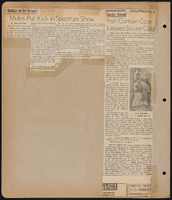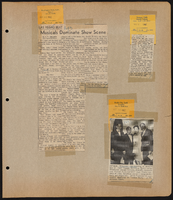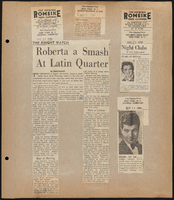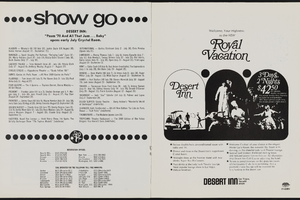Search the Special Collections and Archives Portal
Search Results
J. T. McWilliams Family Papers
Identifier
Abstract
The collection consists of letters, greeting cards, survey maps, newspaper clippings, legal papers, photographs, collected recipes, land sales and expense journals, and survey reference books. The material was created or collected by pioneering Nevada surveyor, engineer, and real estate entrepreneur J. T. (John Thomas) McWilliams and his wife, Iona, between 1900 and 1968.
Archival Collection
Spencer and Georgia Hanna Butterfield Photograph Collection
Identifier
Abstract
The Spencer and Georgia Hanna Butterfield Photograph Collection (approximately 1900-1978) consists of black-and-white photographic prints and negatives of the Hanna and Butterfield families. It also contains images of early and prominent residents of Las Vegas, Nevada such as James Cashman Sr., Las Vegas Chamber of Congress members, Union Pacific Railroad president George Ashby, and many other notable persons from early Las Vegas. The collection also includes photographs taken in Elko County, Nevada, the Hoover Dam, and other Las Vegas area images.
Archival Collection
Alice Key Photograph Collection
Identifier
Abstract
The Alice Key Photograph Collection (1930s-1990s) is comprised of color and black-and-white photographic prints of activist, dancer, and journalist Alice Key with family, friends, political figures, and performers. Materials include photographs of Senator Howard Cannon, Louis Armstrong, and Bill Robinson, and signed professional head shots. Also pictured are Key's coworkers and unidentified performers.
Archival Collection

Amanda "Alex" Aikens oral history interview: transcript
Date
Archival Collection
Description
Oral history interview with Amanda "Alex" Aikens conducted by Barbara Tabach on December 28, 2017 for the Remembering 1 October Oral History Project. In this interview, Aikens discusses the support she provided for the community after the October 1, 2017 shooting in Las Vegas, Nevada along with the event at First Friday that she organized to provide counseling services for those in need. She describes her usage of Facebook as a social media platform to keep the community posted on the shooting as well as any advice and resources for those who wanted to help. Aikens expands upon her realization that people felt the need to contribute and discusses her efforts to gather a group of therapy volunteers that eventually grew so large an event space was needed. In addition to the volunteers who provided counseling and other event functions, she mentions a few of the companies that made the event possible with a donation of resources, such as First Friday that offered room space and a nearby office that supplied furniture.
Text






